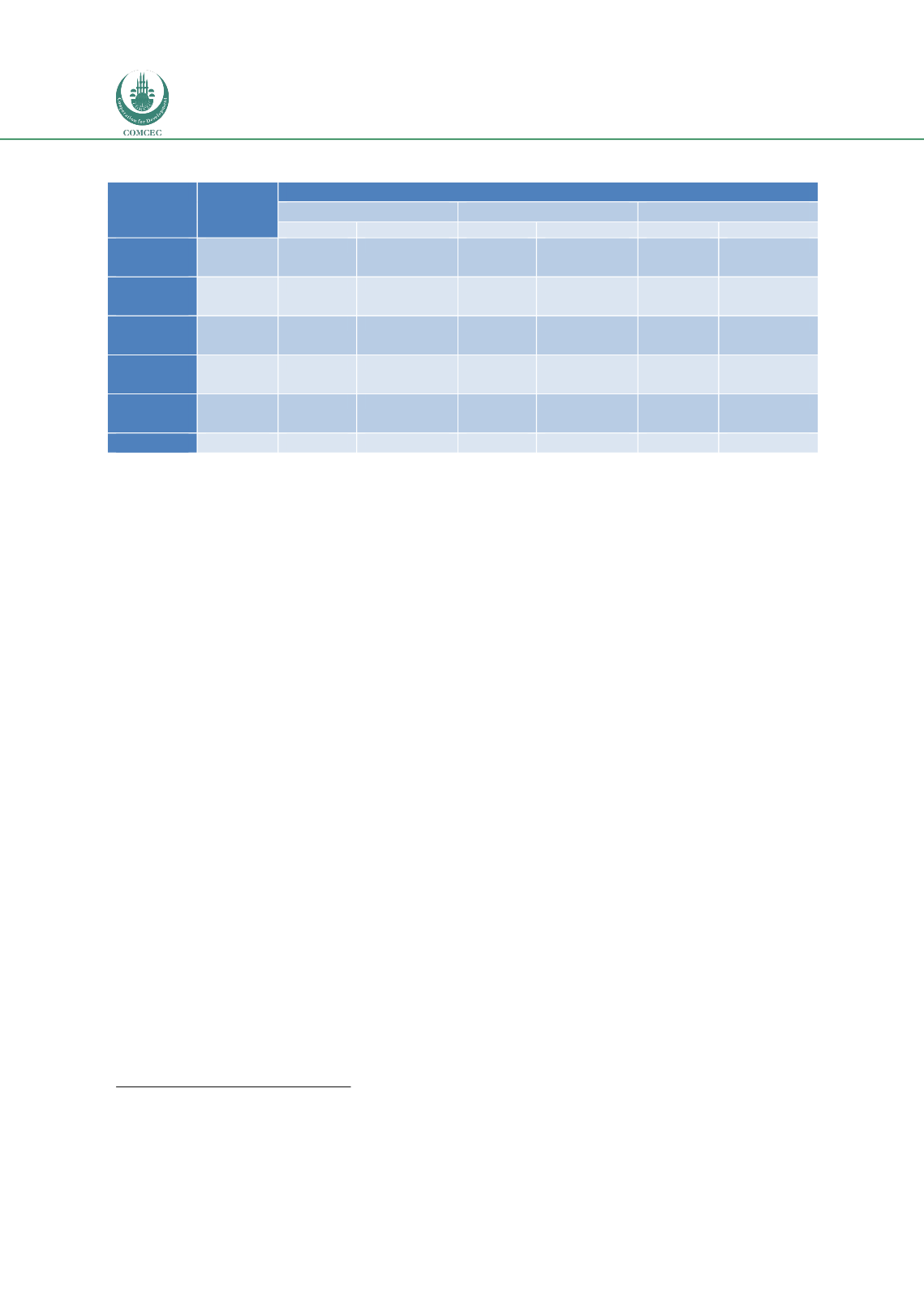

Reducing Postharvest Losses
In the OIC Member Countries
82
Table 43: Estimated impact of 10-30% Egyptian cereal postharvest losses
Item
2013 (t)
Hypothetical quantity and value of postharvest losses of
10%
20%
30%
t
USD
t
USD
t
USD
Wheat
produced
9,460,200
946,020
370,839,840
1,892,040
741,679,680
2,838,060
1,112,519,520
Wheat
imported
10,288,434
1,028,843
316,883,767
2,057,687
633,767,534
3,086,530
950,651,302
Maize
produced
7,956,593
795,659
210,054,055
1,591,319
420,108,110
2,386,978
630,162,166
Maize
imported
5,771,770
577,177
115,435,400
1,154, 354
230,870,800
1,731,531
346,306,200
Rice
produced
5,724,106
572,411
144,819,882
1,144,821
289,639,764
1,717,232
434,459,645
Total
39,201,103
3,920,110
1,158,032,944
7,840,221
2,316,065,888
11,760,331
3,474,098,833
Note: The above calculations use the domestic wheat procurement price of USD$392/t; and the imported wheat
price of USD308/t; (FAO, 2015); the domestic maize and rice procurement prices of USD$264/t and USD253/t
(Hamza & Beillard, 2014); and the international maize price of USD$200/t (USDA, 2016)
These rough calculations highlight the huge losses occurring if postharvest cereal grain loss
levels are even just 10%, let alone closer to 20 or 30%.
A 10% postharvest loss of all Egypt’s
domestically produced and imported wheat, maize and rice would equate to the loss of
3.9 million tons of cereal grains per annum, equivalent to USD$ 1.16 billion/ annum, or
the annual caloric requirements of at least 15 million people
(at 2,500 kcal per person per
day)
8
.
The high subsidised output prices for locally-grown wheat and maize in Egypt, might suggest it
would make more economic sense to focus postharvest loss reduction attention on the
postharvest stages of domestically produced wheat. However only between 3 and 5 million
tons of this domestically grown wheat is ever purchased at that price, with the larger
proportion ~63% of the domestically produced wheat being stored at the homesteads of the
farmers producing it.
In Egypt, farmers grow wheat as a winter crop planted in Oct/Nov, harvested in Apr/May. The
government announces its wheat procurement price prior to the planting season (currently
$357/ton (Wally, 2016)), and if farmers are dissatisfied with it this affects the wheat acreage
planted. The General Authority for Supply Commodities (GASC) sets annual targets of the
amount of locally produced wheat it wishes to purchase, but often fails to meet these targets as
the private sector traders offer farmers higher prices (Mansour & Iglesias, 2011). Farming
families
9
will keep their own stocks of cereals
10
to mill at the village mill and then produce
bread from, and some also feed livestock with cereal grains. Most farmers use sickles and
scythes to harvest their cereal crops, a few larger farmers using reaping machines (El-Lakwah,
1995). The crop is then transported from the field to the threshing place or homesteads by
camel, animal carts, donkeys, although larger-scale farmers may vehicles. The crop is placed on
the ground at the threshing place and dried using the sun and air. Most Egyptians use
8
Assuming 3,500 kcal per kg of average grain (Rosen
et al
., 2016)
9
Wheat was grown on 4.3 million farms in Egypt in 2012, 89% of farms are smaller than 1.3 ha (FAO, 2015).
10
63% of the domestically produced wheat in Egypt is kept and consumed on farm for food, seeds, feed etc., only 37% is
bought by the Government.
















